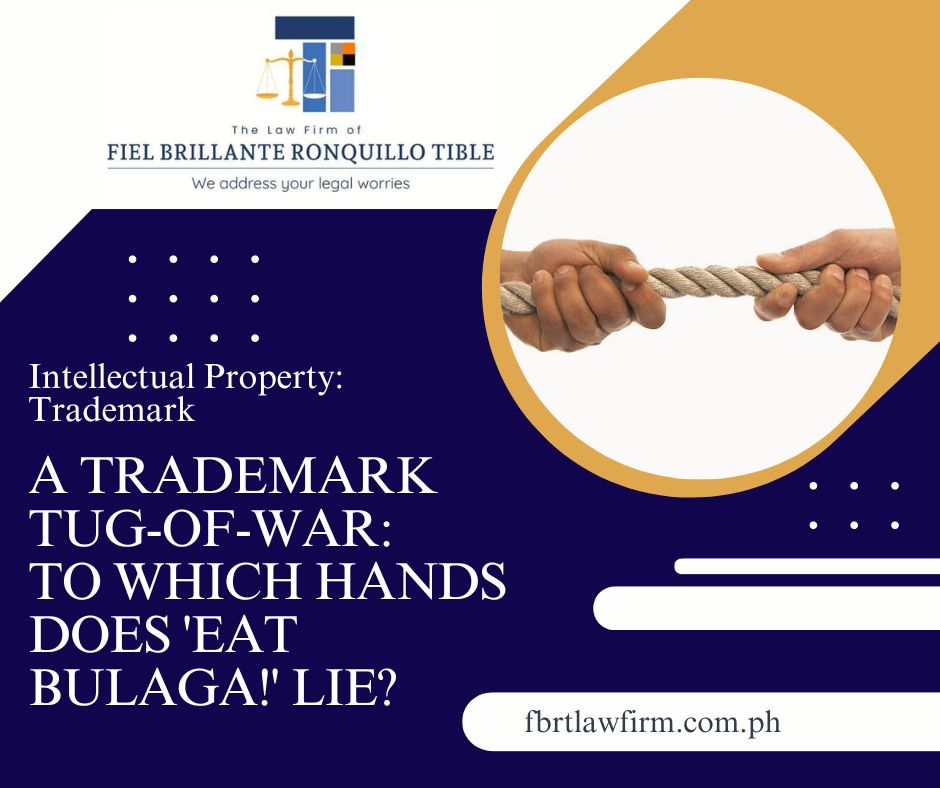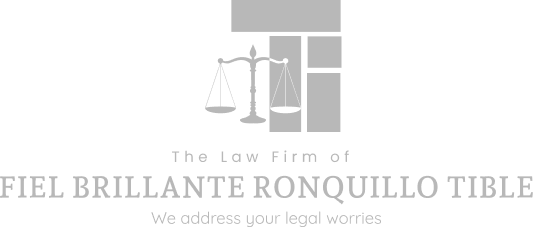Did you know that your intellectual property may be one of your business’s most, if not the most, valuable assets? Protecting your intellectual property rights may make or break your business.
Sometimes as a business owner, when you think of your assets, you only think about your tangible assets: those that you can see, feel, or taste. Then, you put up structures to protect your assets from being taken. You put up a fence to protect your equipment or building. You install security cameras. And you also engage the services of security guards.
But what structures have you put in place to protect your intellectual property? Do you even know what your intellectual property is as a business? All businesses have one. As we stated earlier, it may even be your most valuable asset.
So, what is intellectual property, and what are your intellectual property rights.
What are Intellectual Property and Intellectual Property Rights
We have heard Napoleon Hill’s oft-quoted statement, “Whatever the mind can conceive and believe, it can achieve.” What the mind can conceive and create is what intellectual property is.
Intellectual property refers to creations of the mind. It can be an invention (patent/utility model), a design (industrial design), a brand name (trademark, or a literary and artistic work (copyright). So, intellectual property covers almost everything since everything is a creation of the mind.

On the other hand, intellectual property rights are the rights given to persons over the creations of their minds. They usually give the creator an exclusive right over the use of his/her creation for a certain period of time. Providing this exclusive right allows creators and inventors to profit from their creations. The State gives this right to encourage people to create more and invent more.
You know of creations and inventions that have significantly impacted the world. Think of the light bulb that lights your room. The computer you are using to write reports. The cellphone you are using to talk to your customers. These are all creations from someone’s mind.
Think also of the well-recognized brand names in the world — Apple, Google, Coca-Cola, to name a few.
These are all intellectual property, and those who created them have intellectual property rights. In other words, the creator or inventor has the exclusive right over the use of these creations or inventions. Therefore, one can only use them with the permission of the creator or inventor.
What Do Intellectual Property Rights Consist Of
Republic Act No. 8293, otherwise known as the Intellectual Property Code of the Philippines, was enacted to protect your intellectual property rights. The law seeks to “protect and secure the exclusive rights of scientists, inventors, artists, and other gifted citizens to their intellectual property and creations, particularly when beneficial to the people.” (Section 1, RA No. 8293)
Why does the State want to protect and secure your intellectual property rights? Because the State understands that “the use of intellectual property bears a social function…for the promotion of national development and progress and the common good.” (Section 1, RA No. 8293)
The law (Section 4, RA No. 8293) says that intellectual property rights consist of the following:
A. Copyright and Related Rights. Copyright protects literary and artistic works, such as books and other writings, musical works, films, paintings and other works, and computer programs.
You usually see this symbol “©” in books, films, computer programs, or at the bottom of some websites. This symbol indicates that the particular book, movie, computer program, and website content are copyrighted. The copyright symbol is followed by the year it was published and the creator’s name. This symbol serves as notice to the world who owns the rights to the book, film, computer program, or website.
B. Trademarks and Service Marks. A trademark is a word, a group of words, sign, symbol, or a logo that distinguishes your business’ goods or services from those of other traders.
Your trademark acts like your identity. It is what distinguishes your products from other products. Therefore, one usually sees the following symbols “™” or “®” to indicate a trademark or registered mark. Like the copyright symbol, the trademark symbols mean no other person can use that mark or logo in their products.
C. Geographic Indications. Geographical indications are place names (in some countries also words associated with a place) used to identify the origin and quality, reputation, or other characteristics of products (for example, “Champagne,” “Tequila,” or “Roquefort”).
Geographic indication refers to a sign used on products that have a specific geographical origin and possess qualities, reputation, or characteristics that are due or attributable to that origin.
Some of the examples of geographic indications in the US are Parmigiano Reggiano cheese and Prosciutto di Parma ham from the Parma region of Italy, Toscano olive oil from Tuscany, Roquefort cheese, Champagne from the region of the same name in France, Irish Whiskey, Darjeeling tea, Florida oranges, Idaho potatoes, Vidalia onions, Washington State apples, and Napa Valley Wines.
D. Industrial Designs. Industrial design focuses on the physical appearance, functionality and manufacturability of a product. An industrial design application is an application for a patent to protect against the unauthorized use of new, original, and ornamental designs for items of manufacture.
The best example of an industrial design is the Coca-cola contour bottle.
E. Patents. A patent is an exclusive right that allows the inventor to exclude others from making, using, importing, or selling the product of his invention during the life of the patent. The invention should be new, involves an inventive step, and is industrially applicable.
F. Layout-Designs (Topographies) of Integrated Circuits. Integrated circuits are also known as “chips” or “microchips.” The layout of the integrated circuits, also known as topography, means how the components are assembled in a particular order on the surface of thin semiconductor material.
G. Protection of Undisclosed Information. This information is commonly known as a trade secret. For the information to qualify as a trade secret, the information:
(a) is secret in the sense that it is not, as a body or in the precise configuration and assembly of its components, generally known among or readily accessible to persons within the circles that normally deal with the kind of information in question;
(b) has commercial value because it is secret; and
(c) has been subject to reasonable steps under the circumstances by the person lawfully in control of the information to keep it secret.
You are now discovering how broad intellectual property rights are and how valuable they are to your business. Intellectual property rights help you enjoy the fruits of your creative abilities. You are, in effect, being rewarded for your contribution to the betterment of society.
What Is Intellectual Property Rights Infringement
Imagine a situation where you created something, but then someone else profited from your hard work. That is what intellectual property rights infringement is. The most common intellectual property rights infringement are:
- Copyright Infringement. Copyright infringement is the reproduction, distribution, performance, and public display of copyright-protected material without the permission of the copyright holder.
With the advent of the internet, copyright infringement has become more prevalent because of the ease of downloading copyrighted material. Digital books, music, or movies can easily be downloaded from the internet and distributed without the copyright holder’s permission. Some people have profited by selling these illegally downloaded books, music, or movies.
- Trademark Infringement. Trademark infringement is the unauthorized use of a trademark or service mark on or in connection with goods and/or services in a manner that is likely to cause confusion, deception, or mistake about the source of the goods and/or services.
Trademark infringement usually happens in the form of counterfeit goods. Counterfeit goods are goods, including packaging, bearing without authorization a trademark that is identical to the trademark validly registered in respect of such goods or which cannot be distinguished in its essential aspects from such a trademark.
- Patent Infringement. Patent infringement occurs when another party makes, uses, or sells a patented item without the patent holder’s permission.
As you can see, intellectual property rights infringement involves the use of the intellectual property of another without the permission of the creator. It is essentially theft of intellectual property.
How Can FBRT Help You Protect Your Intellectual Property Rights
Now that you have discovered how valuable your intellectual property is and how someone can also quickly “rob” you of your intellectual property, you might be thinking about how you can protect your intellectual property rights.
You can protect your intellectual property rights usually in two ways:
- Registration. Registration of your creation in the Intellectual Property Office of the Philippines (IPOPHIL) can help protect your intellectual property rights. Registration of your creation serves as notice to the world of your ownership over intellectual property. While registration may not be required for copyright, since your intellectual property right over the copyrighted material is protected from the moment of its creation, it would be wise to have your material deposited with the IPOPHIL and get a certificate of copyright registration.
- Enforcement. There might be instances wherein you might be forced to file a case for infringement of your intellectual property rights. This action is taken to avoid further damage to your business and recover any lost profits because of your intellectual property rights violation.
FBRT can help you register your intellectual property and enforce your intellectual property rights. FBRT is composed of young, significantly able, and zealous attorneys who would be available to you as may be required to protect your intellectual property rights. Our attorneys have the experience and expertise to handle the registration of your intellectual property and the enforcement of your intellectual property rights.
If you want to know more about your business’s intellectual property and how we can protect your intellectual property rights, we would be happy to assist you. Please speak with our IP lawyers today.
Related Articles:
Sources:
- ipophil.gov.ph/what-is-intellectual-property/
- wto.org/english/tratop_e/trips_e/intel1_e.htm
- wto.org/english/tratop_e/trips_e/gi_e.htm
- ipophil.gov.ph/glosaryo-ng-yamang-isip/
- everycrsreport.com/reports/R44556.html
- wipo.int/patents/en/topics/integrated_circuits.html
- wto.org/english/docs_e/legal_e/27-trips_04d_e.htm
- officialgazette.gov.ph/1997/06/06/republic-act-no-8293/
Related Reads:
- Why Your Business Needs Legal Corporate Retainer Services
- What You Need To Know For The 09 May 2022 Elections
- How to register your business with DTI






